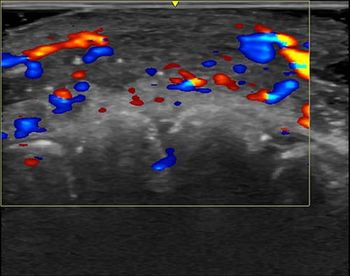
GE and Fonar bury the hatchet
Only three years ago, GE Medical Systems lost the highest profile lawsuit in the radiology industry when Fonar convinced a jury to order the multimodality company to pay $128.7 million in damages for patent infringement. Now the two companies have signed
Only three years ago, GE Medical Systems lost the highest profile lawsuit in the radiology industry when Fonar convinced a jury to order the multimodality company to pay $128.7 million in damages for patent infringement. Now the two companies have signed an agreement to provide mutual access to each others patented MR intellectual property. A sweetener to the deal is GEs agreement to sell and distribute Fonars Stand-Up MRI.
The joint announcement, made Aug. 2, highlighted the addition of Stand-Up MRI to GEs product line. The system, which generates a 0.6-tesla vertical field, was first unveiled as a work-in-progress in 1996. When ready for sale, the system will provide images of the patient in a weight-bearing position, a novel capability.
For freestanding clinics and orthopedic practices, the Stand-Up MRI could be major, said Loretta Loncoske, an analyst for MDB Information Network in Dallas. Its good technology.
The mid-field system is essentially a Fonar Quad 12000 scanner tipped on its side. Rather than lying on a table, the patient stands on a platform between the two resistive magnets and is elevated into position. The idea is to provide images of weight-bearing parts of the body that may have led a patient to seek medical attention. Theoretically, the pathology, if it exists, will be easier to see when the patient is in a weight-bearing position.
Executives from both companies praised the agreement, although no mention was made of the Stand-Up MRI itself.
Access to Fonars MR intellectual property in this agreement will allow GE to offer any customer the broadest range of technology, said GE president and CEO Jeffrey R. Immelt in a prepared statement.
Dr. Raymond V. Damadian, president and CEO of Fonar, expressed excitement about the benefits of this agreement to both companies and about the healthcare advances it will bring to the public.
Industry analyst Philip Drew believes that the addition of this product to the GE lineup might be only the most visible aspect of the deal and not the main reason GE cut this agreement. Drew, a principal at the Concord Consulting Group in Concord, MA, noted that building a weight-bearing MRI scanner would pose no significant technological challenge to a company such as GE Medical.
All youve got to do is put the magnet so the field is horizontal instead of vertical, he said. GE could build one blindfolded.
What may be attracting GE to the deal, however, is access to Fonars intellectual properties.
Maybe Damadians got a patent that GE is worried about, Drew said. So to avoid another court battle, they just decided to go ahead and join them.
Mitch Goldburgh, vice president and general manager of the consulting group, Technology Marketing Group, speculates that Fonars long and successful history of litigation against competitors spurred GE to get into the deal.
I think there has to be something that GE has in their product line or coming up that would violate a Fonar patent and GE could not license it, Goldburgh said. So it has behooved GE to buy the enemy. And if the deal results in incremental revenue as well, then great, he said, noting that his opinion is speculation and not based on any inside knowledge about the deal.
Neither GE nor Fonar executives were available for specific comment about the motivation behind the agreement or their expectations specifically regarding Stand-Up MRI.
Newsletter
Stay at the forefront of radiology with the Diagnostic Imaging newsletter, delivering the latest news, clinical insights, and imaging advancements for today’s radiologists.




























